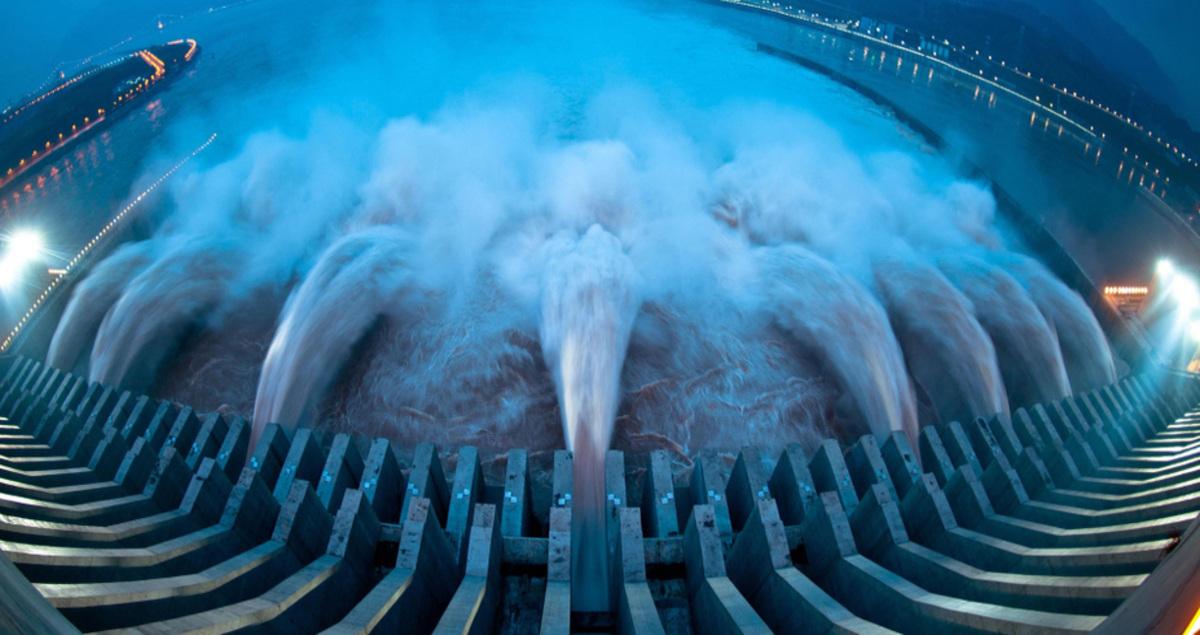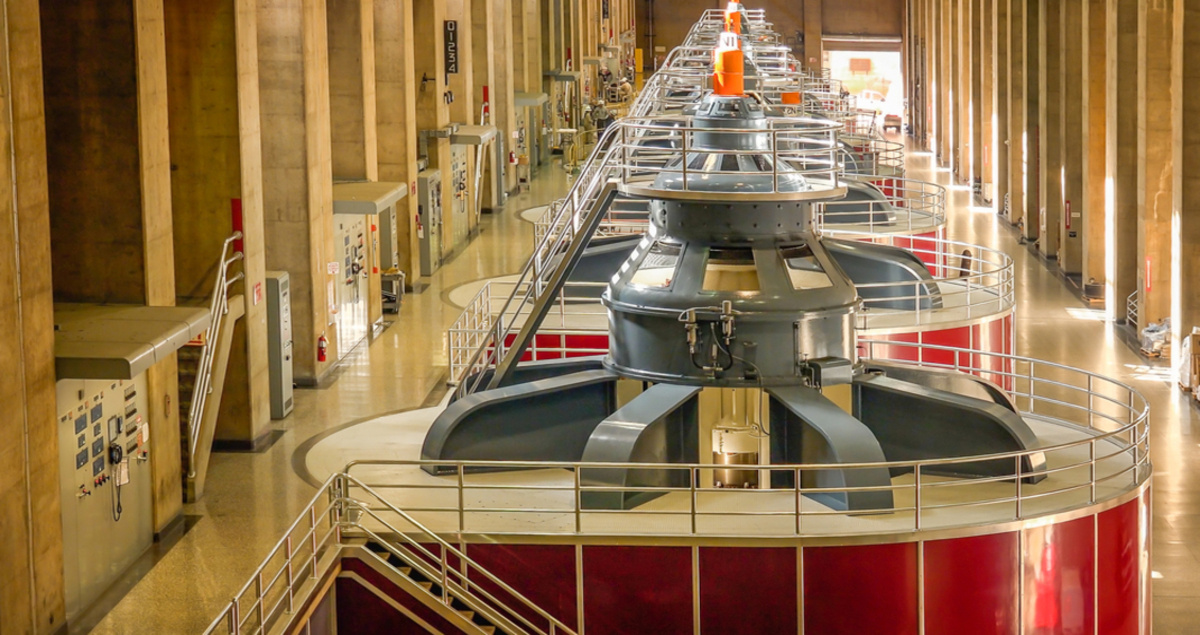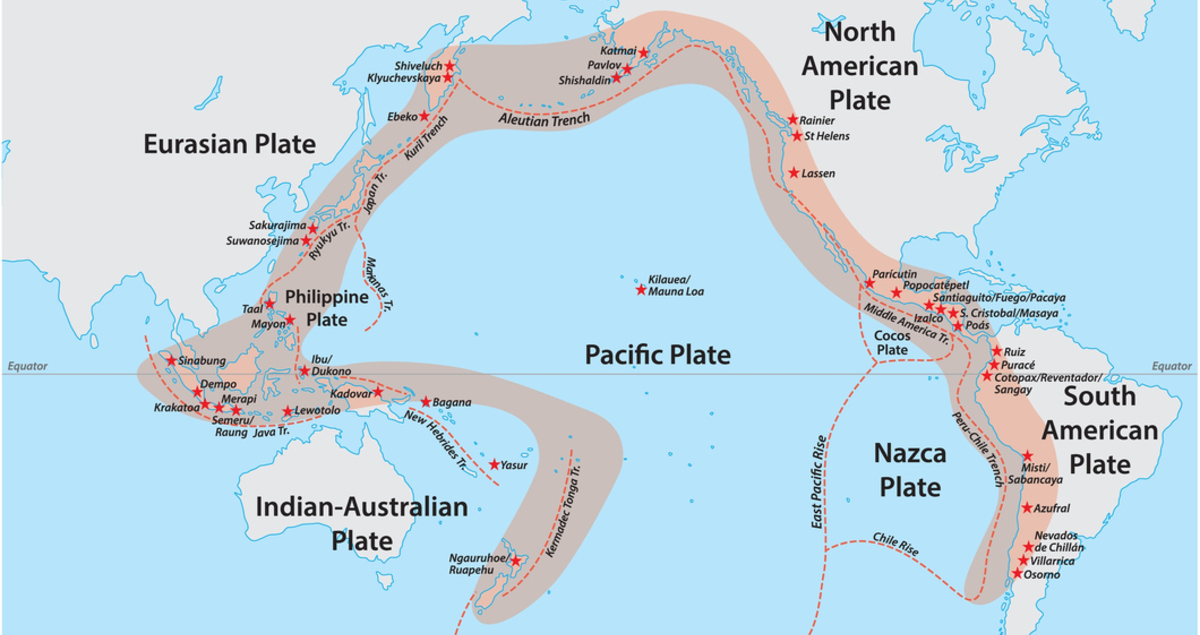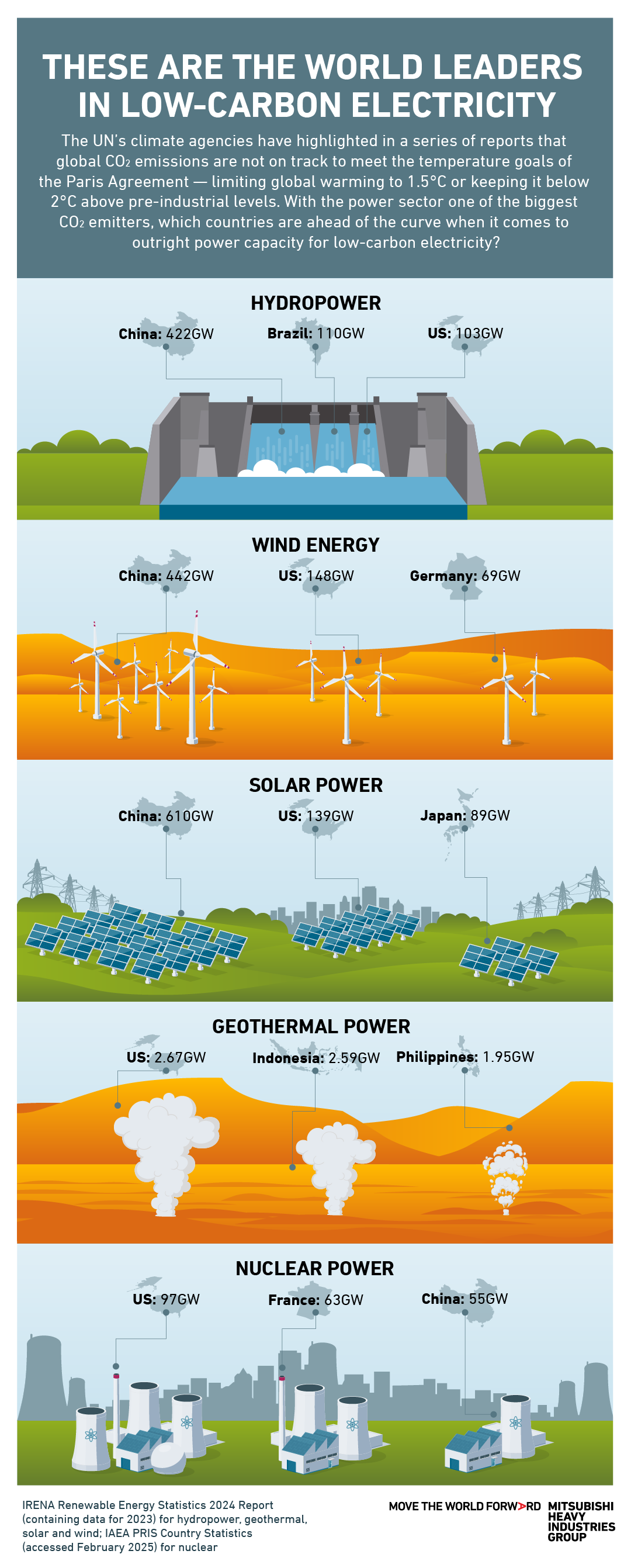Low-carbon electricity: which countries are leading the world?

This article was originally published on 29th November 2023 and updated on 22nd May 2025.
Despite continued global efforts to slow climate change, no single country’s efforts align with reaching the Paris Agreement’s target of limiting global warming to 1.5°C above pre-industrial levels. This is the sobering verdict of the Climate Action Tracker, a scientific project that measures countries’ climate action, as of December 2024.
With the electricity sector one of the biggest sources of CO₂ emissions, which countries are leading the field when it comes to low-carbon electricity? Some of the answers may surprise you.
Hydropower
Hydroelectricity is one of the oldest forms of energy generation — going back to water mills used to grind wheat into flour. The world leader in hydroelectric power in 2023 was China, according to the latest data from the International Renewable Energy Agency (IRENA).
With a generation capacity of 422GW, it made up around 30% of the world’s total hydro capacity. China also has the world’s largest hydropower plant, the 22.5GW Three Gorges Dam, according to IRENA. Most of the country’s largest potential hydro sites have been developed, so substantial increases are expected to be limited.
IRENA's data shows Brazil in second place with just under 110GW and the US in third with 103GW capacity as of 2023. The US was one of the earliest adopters of hydroelectricity in the world. Hydropower plants were built at sites such as Grand Rapids, Michigan, and Niagara Falls from the early 1880s. They were mainly used to supply local mills and provide light to the locality.

Wind energy
China also has the largest installed capacity of wind power, amounting to 442GW in 2023, according to IRENA. That is some 43% of global capacity. This was a substantial increase from the 366GW capacity the year before. China plans to significantly boost renewables through large onshore and offshore wind farms and solar PV. The goal is to integrate these with other energy sources, such as hydropower. The country passed its first-ever energy law last year to govern its transition away from fossil fuels and the creation of an integrated energy network.
China’s closest rival is the US, with 148GW capacity in 2023. Wind is the largest source of renewable electricity generation in the United States, making up more than 10% of the country's electricity and continuing to grow at pace.
Germany follows in third place with 69GW, up from 66GW in 2023. The German government has cut some red tape and set out more ambitious targets for wind energy, supporting the growth of what is now the country’s “energy workhorse” and key for securing greater energy independence.

Solar power
A similar picture emerges for solar power generation, with China in the lead 610GW – up 55% from 393GW in 2022 – with the US in second place (139GW). Their closest rival may be slightly unexpected, though: Japan had 89GW of solar power in 2023, according to the IRENA data.
In the wake of the Fukushima Daiichi nuclear disaster and the climate crisis, Japan’s government has prioritized solar energy expansion. Since then, the country has evolved into one of the top three consumers of solar energy in the world. As a mountainous island nation with limited space for on-shore power generation, Japan was also an early user of floating solar panels on freshwater lakes.

Geothermal energy
Tapping into the heat stored beneath the surface of our planet provides a constant source of low-carbon, renewable energy. But it is not readily available everywhere. The US is the world leader in geothermal energy, with 2.67GW.
However, 30% of the world’s geothermal capacity is deployed in just two Southeast Asian countries: Indonesia (2.59GW) and the Philippines (1.95GW). Both are located near the ‘Ring of Fire’ volcanic zone in the Pacific Ocean, an area of high geothermal potential that extends to the US Pacific coast.
Experts expect Ring of Fire countries to expand their geothermal capacity to meet decarbonization goals in the coming years. This includes enhanced geothermal technologies to tap into deposits that have not been accessible with traditional methods, particularly in the US.

Nuclear power
Nuclear energy gained popularity in the 1970s but faced setbacks due to a series of accidents in the 1980s and 2000s. Against the backdrop of the energy crisis and the net zero transition, nuclear power plants have been making a comeback as cost-effective, dispatchable and low-carbon electricity sources. New technology developments and improved reactor safety have supported this.
According to the International Atomic Energy Agency, the US currently has the largest installed base of nuclear power plants (97GW, as of February 2025), followed by France (63GW) and China (55GW). However, the balance could soon swing toward China, which has close to 30GW of capacity under construction and is expected to overtake the US to have the world’s largest nuclear reactor fleet by 2030.
To reduce global warming and put the world on a more sustainable footing, leaders in renewable electricity have a major role in building more low-carbon capacity and supporting less advanced players to get on track for 2050.
Learn more about nuclear power’s evolution in MHI’s latest whitepaper:The global nuclear moment: versatile energy source for net zero





